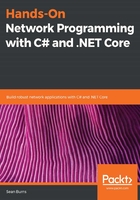
The URL as a sub-type of the URI
We've spent the bulk of this section discussing URLs specifically. What you may not have realized, however, is that a URL is actually a single, specific kind of something known as a Uniform Resource Identifier (URI), which is a string of characters adhering to a well-defined syntax that universally and uniquely identifies a resource on a network.
The distinction between a URL and a URI is subtle, and almost entirely conceptual. The simplest way to characterize that distinction is to note that, by using a URL, we are guaranteed to be able to identify and locate a requested resource. The only thing we are guaranteed, given a simple URI, is an ability to identify it that is to distinguish the resource from any other arbitrary resource.
In practice, however, the terms URL and URI are frequently used interchangeably. This is because, since URL is a specific kind of URI, it's always valid to characterize a URL as a URI. Meanwhile, it is often sufficient to characterize a URI as a URL since knowing the specific identity of a resource within the context of a network is usually enough to then locate that resource.
If you're wondering why I brought up a subject of such apparent triviality, it's for clarity's sake. Over the course of this book, I'll consistently talk about resources as being identified by their URL. However, the class exposed by .NET Core for constructing, decomposing, and leveraging these addresses is named for the more generic URI specification. In fact, let's take a quick look at that class now.